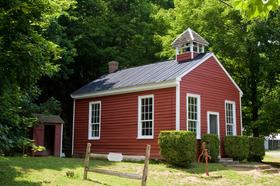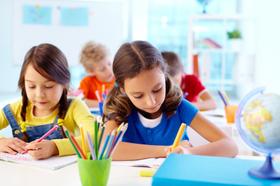Top Rankings
Kearsarge Regional School District ranks among the top 20% of public school district in New Hampshire for:
Category
Attribute
Graduation Rate
Highest graduation rate (Top 5%)
Community Size
Largest student body (number of students) (Top 1%)
For the 2025 school year, there are 8 public schools serving 1,664 students in Kearsarge Regional School District. This district's average testing ranking is 6/10, which is in the top 50% of public schools in New Hampshire.
╬█╬█┬■╗ş Schools in Kearsarge Regional School District have an average math proficiency score of 44% (versus the New Hampshire public school average of 41%), and reading proficiency score of 57% (versus the 51% statewide average).
Minority enrollment is 6% of the student body (majority Hispanic), which is less than the New Hampshire public school average of 18% (majority Hispanic).
Overview
This School District
This State (NH)
# Schools
8 Schools
508 Schools
# Students
1,664 Students
165,155 Students
# Teachers
171 Teachers
14,445 Teachers
Student : Teacher Ratio
10:1
10:1
Student By Grade
District Rank
Kearsarge Regional School District, which is ranked within the top 50% of all 189 school districts in New Hampshire (based off of combined math and reading proficiency testing data) for the 2021-2022 school year.
The school district's graduation rate of 95% has stayed relatively flat over five school years.
Overall District Rank
#82 out of 189 school districts
(Top 50%)
(Top 50%)
Math Test Scores (% Proficient)
44%
40%
Reading/Language Arts Test Scores (% Proficient)
56%
51%
Science Test Scores (% Proficient)
36%
36%
Graduation Rate
≥95%
88%
Students by Ethnicity:
Diversity Score
0.12
0.32
% American Indian
n/a
n/a
% Asian
1%
3%
% Hispanic
2%
8%
% Black
1%
2%
% White
94%
82%
% Hawaiian
n/a
n/a
% Two or more races
2%
5%
All Ethnic Groups
District Revenue and Spending
The revenue/student of $26,175 is higher than the state median of $22,075. The school district revenue/student has stayed relatively flat over four school years.
The school district's spending/student of $24,868 is higher than the state median of $21,293. The school district spending/student has stayed relatively flat over four school years.
Total Revenue
$44 MM
$3,646 MM
Spending
$41 MM
$3,517 MM
Revenue / Student
$26,175
$22,075
Spending / Student
$24,868
$21,293
Best Kearsarge Regional School District ╬█╬█┬■╗ş Schools (2025)
School
(Math and Reading Proficiency)
(Math and Reading Proficiency)
Location
Grades
Students
Rank: #11.
Kearsarge Reg. Elem. School At New London
(Math: 55-59% | Reading: 70-74%)
Rank:
Rank:
9/
Top 20%10
64 Cougar Ct
New London, NH 03257
(603) 526-4737
New London, NH 03257
(603) 526-4737
Grades: K-5
| 337 students
Rank: #22.
Sutton Central Elementary School
(Math: 50-59% | Reading: 60-69%)
Rank:
Rank:
9/
Top 20%10
28 Newbury Road
Bradford, NH 03221
(603) 927-4215
Bradford, NH 03221
(603) 927-4215
Grades: K-5
| 86 students
Rank: #33.
Kearsarge Reg. Elementary School - Bradford
(Math: 45-49% | Reading: 60-64%)
Rank:
Rank:
8/
Top 30%10
163 Old Warner Rd.
Bradford, NH 03221
(603) 938-5959
Bradford, NH 03221
(603) 938-5959
Grades: K-5
| 167 students
Rank: #44.
Kearsarge Regional High School
(Math: 35-39% | Reading: 65-69%)
Rank:
Rank:
7/
Top 50%10
457 North Rd.
North Sutton, NH 03260
(603) 927-4261
North Sutton, NH 03260
(603) 927-4261
Grades: 9-13
| 487 students
Rank: #55.
Simonds Elementary School
(Math: 45-49% | Reading: 45-49%)
Rank:
Rank:
6/
Top 50%10
14 Church St.
Warner, NH 03278
(603) 456-2241
Warner, NH 03278
(603) 456-2241
Grades: K-5
| 130 students
Rank: #66.
Kearsarge Regional Middle School
(Math: 38% | Reading: 48%)
Rank:
Rank:
5/
Bottom 50%10
32 Gile Pond Rd.
North Sutton, NH 03260
(603) 927-2100
North Sutton, NH 03260
(603) 927-2100
Grades: 6-8
| 404 students
Rank: n/an/a
163 Old Warner Road
Bradford, NH 03221
(603) 938-5959
Bradford, NH 03221
(603) 938-5959
Grades: PK
| 28 students
Rank: n/an/a
114 Cougar Ct.
New London, NH 03257
(603) 526-8604
New London, NH 03257
(603) 526-8604
Grades: PK
| 25 students
Frequently Asked Questions
How many schools belong to Kearsarge Regional School District?
Kearsarge Regional School District manages 8 public schools serving 1,664 students.
What is the rank of Kearsarge Regional School District?
Kearsarge Regional School District is ranked #83 out of 189 school districts in New Hampshire (top 50%) based off of combined math and reading proficiency testing data for the 2021-2022 school year. This district ranks in the top 20% of New Hampshire school districts for: Highest graduation rate (Top 5%) and Largest student body (number of students) (Top 1%)
What is the racial composition of students in Kearsarge Regional School District?
94% of Kearsarge Regional School District students are White, 2% of students are Hispanic, 2% of students are Two or more races, 1% of students are Asian, and 1% of students are Black.
What is the student/teacher ratio of Kearsarge Regional School District?
Kearsarge Regional School District has a student/teacher ratio of 10:1, which is lower than the New Hampshire state average of 11:1.
What is Kearsarge Regional School District's spending/student ratio?
The school district's spending/student of $24,868 is higher than the state median of $21,293. The school district spending/student has stayed relatively flat over four school years.
Recent Articles

Segregation in K-12 Education: Colonial Era
Explore the origins of educational segregation during the colonial era and the differential treatment of Native American, African American, and white students. This article delves into the historical context, policies, and societal attitudes that shaped early education in colonial America, highlighting the disparities and injustices that persisted within the schooling systems of that time.

2011 Classroom Size Update: Are Classes Still Growing Larger?
Since the recession, public school classrooms have seen major budget cuts - and many increases in class sizes. How is the situation in 2011? Read this article to find out.

Will Single Sex Classrooms Save ╬█╬█┬■╗ş Schools?
Learn about the benefits of single sex classrooms and why public schools are hoping this type of classroom will save the American school system.





